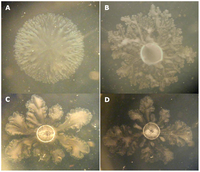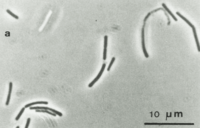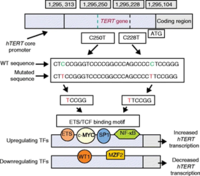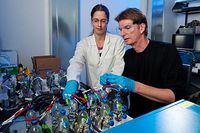Methanobacterium palustre
Classification
Domain: Archaea--- Kingdom: Euryarchaeota--- Phylum: Euryarchaeota--- Class: Methanobacteria--- Order: Methanobacteriales--- Family: Methanobacteriaceae--- Genus: Methanobacterium--- Species: Palustre
Species
|
NCBI: Taxonomy |
Methanobacterium palustre
Description and Discovery
Methanobacterium palustre was discovered in 1989 in a location in Germany known as the Sippenauer Moor. The environmental habitat dominating in this area is known as a peat bog. Others often refer to it as a marshland. Due to its ability to anaerobically produce methane through a process known as methanogenesis, researchers thus named it's genus "Methanobacterium". Ironically the term used for the species identification, "palustre", is French for the word: marshland. Therefore you could describe the microorganism as an Archaea that thrives in a marshland habitat via producing methane metabolically. (Zellner, G., et al.)
Cell Morphology
Methanobacterium palustre has a thin, rod-like shape and has been characterized as Strain F. This bacillus microorganism has an average cell length of anywhere between 2.5µm – 5µm. The cell body occasionally has filamentous appendages protruding outwards. These are used mostly as a means for cellular reproduction. In comparison, the appendages are over 10x the length of the actual cell body measuring to about 65µm. A Gram stain revealed that it is in fact Gram Positive meaning that it lacks a peptidoglycan layer outside of its cytoplasmic membrane. After viewing this microorganism using the wet mount technique, motility was not observed. Therefore, M. palustre must rely on water currents to move about its anoxic environment. (Zellner, G., et al.)
Ideal Living Requirements and Metabolism
Interesting features of cell structure; how it gains energy; what important molecules it produces.
Significance in Today's World
Habitat; symbiosis; biogeochemical significance; contributions to environment.
If relevant, how does this organism cause disease? Human, animal, plant hosts? Virulence factors, as well as patient symptoms.
References
Zellner, G., et al. Chracterization of a New Mesophilic, Secondary alcohol -utilizing methanogen, Methanobacterium palustre Spec. Nov. from a Peat Bog. Archives of Microbiology, Springer-Verlag: 151-160.
Zellner, G., et al. Methanobacterium palustre picture 1. 1989. pdf.
Author
Page authored by Brian Underwood and Joe Wernet, students of Professors: Ned Walker and Kaz Kashefi at Michigan State University.




